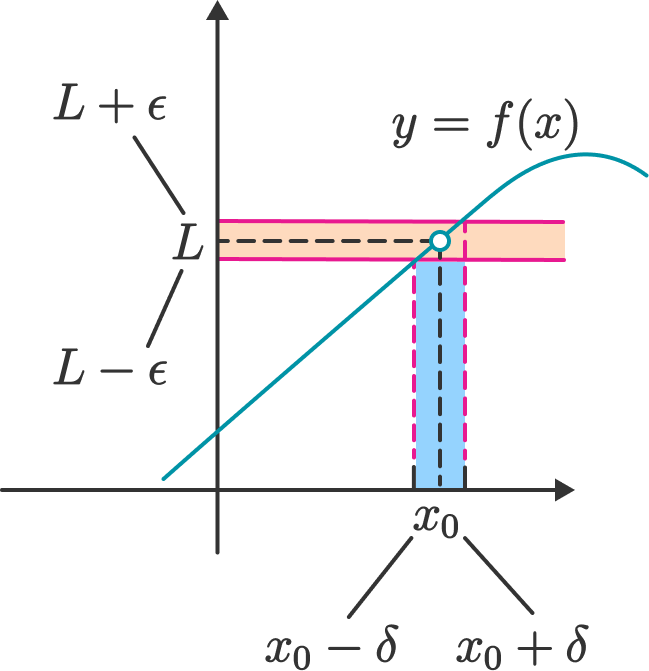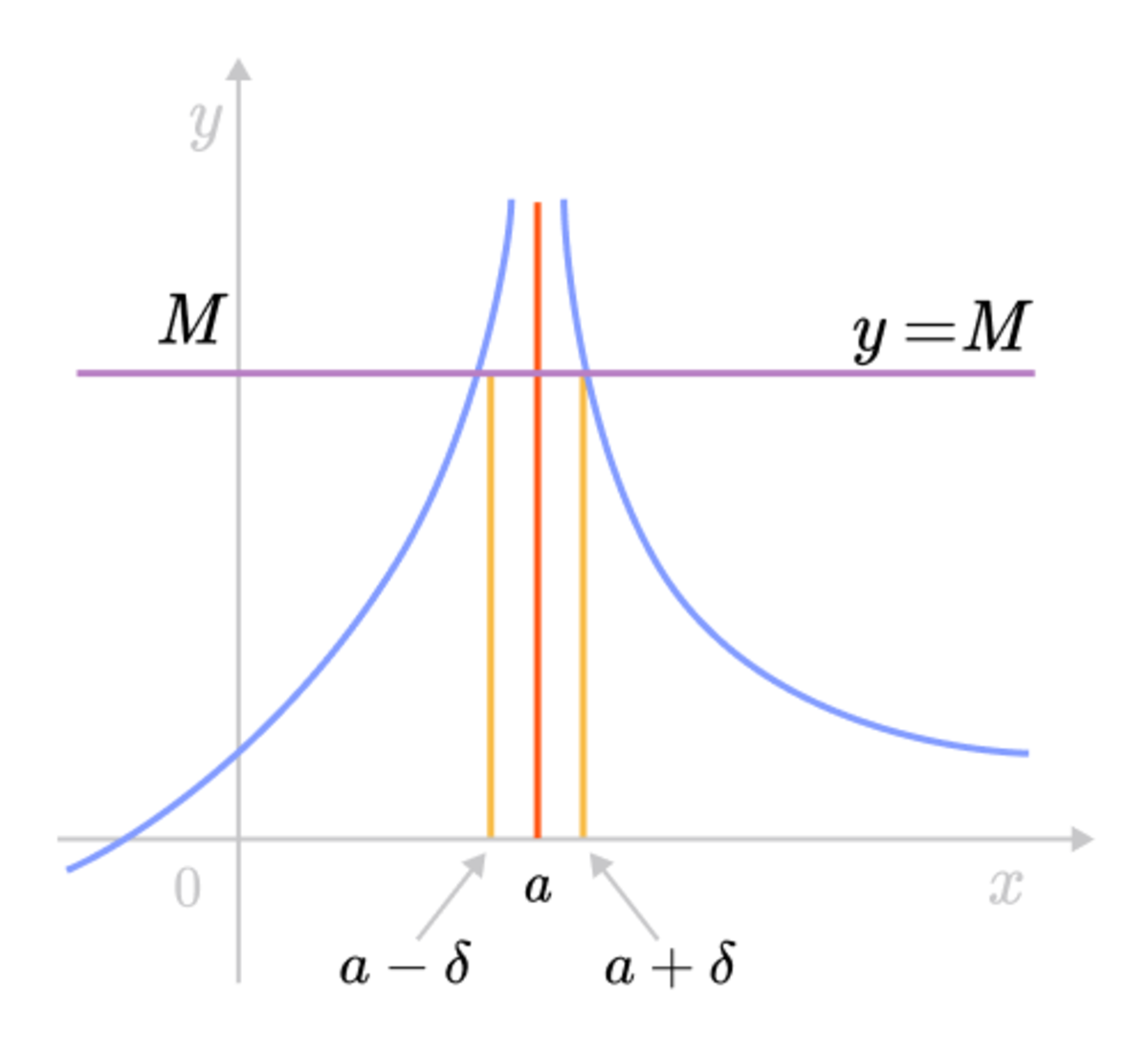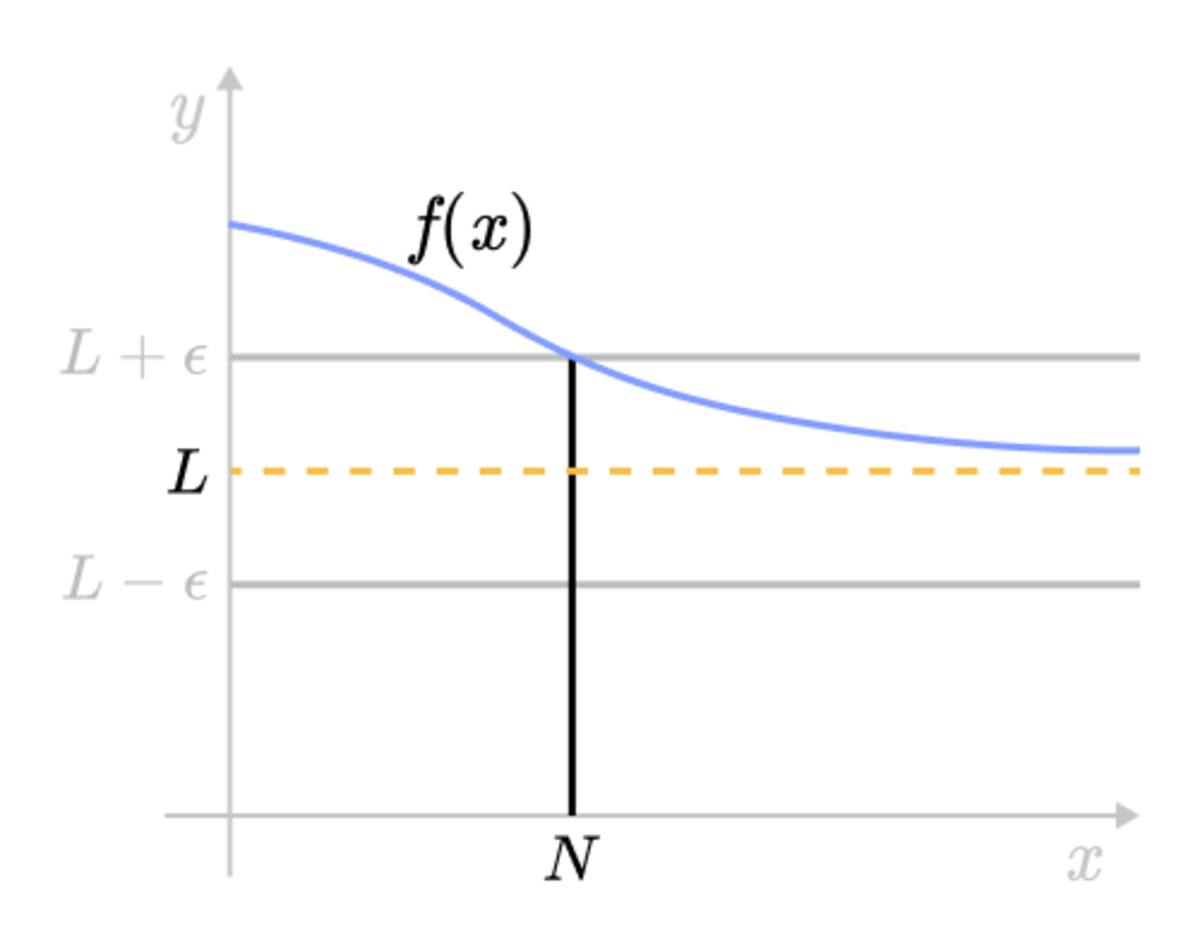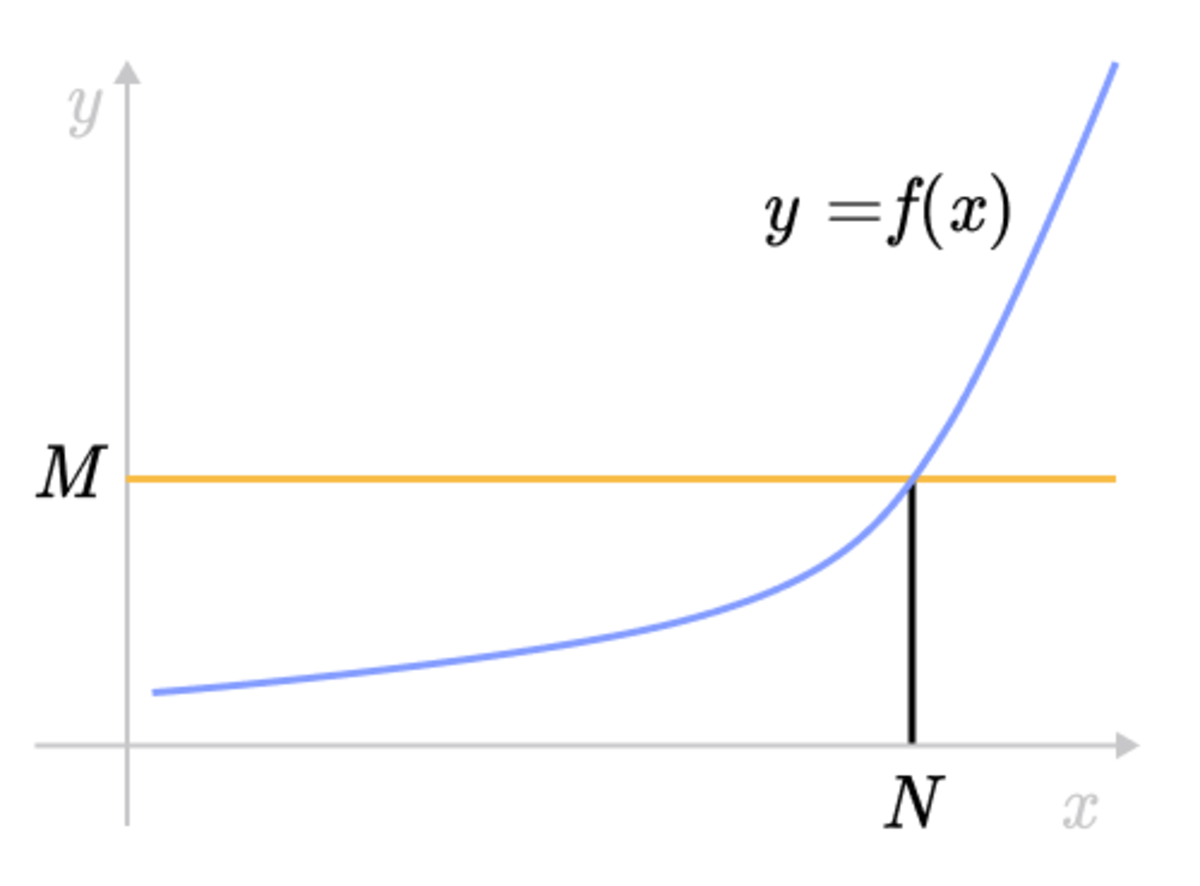Definition of Continuity Epsilon Between 01
Limit of a function - definition
Let be a function defined on an open interval around need not be defined We say that the limit of as approaches is , i.e.
if for every there exists such that for all
In other words, the definition states that we can make values returned by the function as close as we would like to the value by using only the points in a small enough interval around . One helpful interpretation of this definition is visualizing an exchange between two parties, Alice and Bob. First, Alice challenges Bob, "I want to ensure that the values of will be no farther than from ." If the limit exists and is indeed , then Bob will be able to respond by giving her a value of , "If for all points is within a -radius interval of , then will always be within an -interval of ." If the limit exists, then Bob will be able to respond to Alice's challenge no matter how small she chooses
For example, in the graph for function below, if Alice gives Bob the value , then Bob gives her the number such that for any in the open interval , the value of lies in the interval . In this example, as Alice makes smaller and smaller, Bob can always find a smaller satisfying this property, which shows that the limit exists.

As the exchange between Alice and Bob demonstrates, Alice begins by giving a value of and then after knowing this value, Bob can determine a corresponding value for . Because of this ordering of events, the value of is often given as a function of . Note that there may be multiple values of that Bob can give.
If there is any value of for which Bob cannot find a corresponding , then the limit does not exist!
For the function Alice wants Bob to show that using the - definition of a limit.
Alice says, "I bet you can't choose a real number so that for all in , we'll have that ."
Which of the following four choices is the largest that Bob could give so that he completes Alice's challenge?
Let be a function defined on some open interval that contains the number need not be defined We say that the limit of as approaches diverges to infinity, i.e. if for every positive number there exists such that for all
This says that the values of can be made arbitrarily large by taking close enough to .
For example, in the graph for the function . For any horizontal line , we can find a number such that for any interval of in the interval but , then the curve lies above the line . We can see that for any larger chosen, a smaller value of is needed.

In the previous sections, we used the terms arbitrarily large to define limits informally. Even though they give a good intution about the description of limits at infinity, they are not mathematically rigorous. Let us try to define them formally.
is said to have a limit at infinity, if there exists a real number such that for all , there exists such that for all . In other words,
For example, in the graph for the function . For sufficiently large value of , we can find the interval of to be but , then the curve lies between the two lines and . We can see that for for any larger chosen, a smaller value of is needed.

Show that
Let , then . Then, for all , Hence, our claim.
0 1 Limit does not exist.
is said to have an infinite limit at infinity, if for all , there exists an such that for all . That is, .
Analogously, is said to have a negative infinite limit at infinity, if for all , there exists an such that for all . That is, .
For example, in the graph for the function . For sufficiently large value of , we can find a value such that for all .

Use the formal definition of infinite limit at infinity, prove that .
Let , and let . Then for all ,
From the example above, we know that . Without extracting out the scalar multiple, prove using the formal definition of infinite limit at infinity as well.
Let , and let . Then for all ,
In general, to prove a limit using the - technique, we must find an expression for and then show that the desired inequalities hold. The expression for is most often in terms of though sometimes it is also a constant or a more complicated expression. Below are a few examples that demonstrate this property.
Show that
Let First we need to determine what value our is going to have. When we want We know that so taking will have the desired property.
There are other values of we could have chosen, such as Why would this value of have also been acceptable? If then as required.
To show that a limit exists, we do not necessarily need to prove that the result holds for all but it is sufficient to show that the result holds for all for any positive value This is because the value for a particular is also a valid for any
Show that
In this example, we have , , and from the definition of limit given above. For any chosen by Alice, Bob would like to find such that if is within distance of , i.e.
then is within distance of , i.e.
To find , Bob works backward from the inequality:
So Bob gives Alice the value of . Then Alice can verify that if then
Prove that
Let We will first determine what our value of should be. When we have
Assuming we have which implies by the triangle inequality.
So, when we let we will have
Using the - definition, prove the following limit:
On the interval , we have , which implies
Now, given , let . Then the calculation above shows that implies
which completes the proof. Therefore,
There are instances where the limit of as approaches increases or decreases without bound. In such cases, it is often said that the limit exists and the value is infinity (or negative infinity). However, some resources say that the limit does not exist in this instance, simply because this restriction makes other theorems in calculus slightly easier to state and remember.
In proving a limit goes to infinity when approaches , the - definition is not needed. Rather, we need only show that the function becomes arbitrarily large at values close to
Prove
Given we need to choose so that if then
Suppose In solving for we find that Therefore, for any challenge we are given, it is ensured that so long as we choose Therefore
Prove
We show that for any positive number , set . Then, when , we have
This shows that the values of the function becomes and stays arbitrarily large as approaches zero, or
The - definition can be used to show that the limit at a point does not exist. For the limit to exist, our definition says, "For every there exists a such that if then " This means that is not the limit if there exists an such that no choice of ensures when
Consider the function given by
Show that the limit at 0 does not exist.
This is almost obvious. We see that the "right-hand limit" is and the "left-hand limit" is As such, it makes sense that the limit does not exist. Let's formally show it, using the - language that we developed above.
Suppose that the limit at 0 exists and is equal to . Let , with a corresponding .
Since the limit exists, we know that for all , we have . However, we also have
This is a contradiction, so our original assumption is not true.
The above proof is easily adapted to show the following:
The limit at an interior point of the domain of a function exists if and only if the left-hand limit and the right-hand limit exist and are equal to each other.
Let be the function that is when is rational and otherwise. Show that does not exist for any
Let be a rational number. We know that Let and Since the irrational numbers are dense in the real numbers, we can find an irrational number but Thus, is not continuous at The result is similar if we consider to be an irrational point.
- Properties of Limits
- Continuous Functions
- Squeeze Theorem
Source: https://brilliant.org/wiki/epsilon-delta-definition-of-a-limit/
0 Response to "Definition of Continuity Epsilon Between 01"
Post a Comment